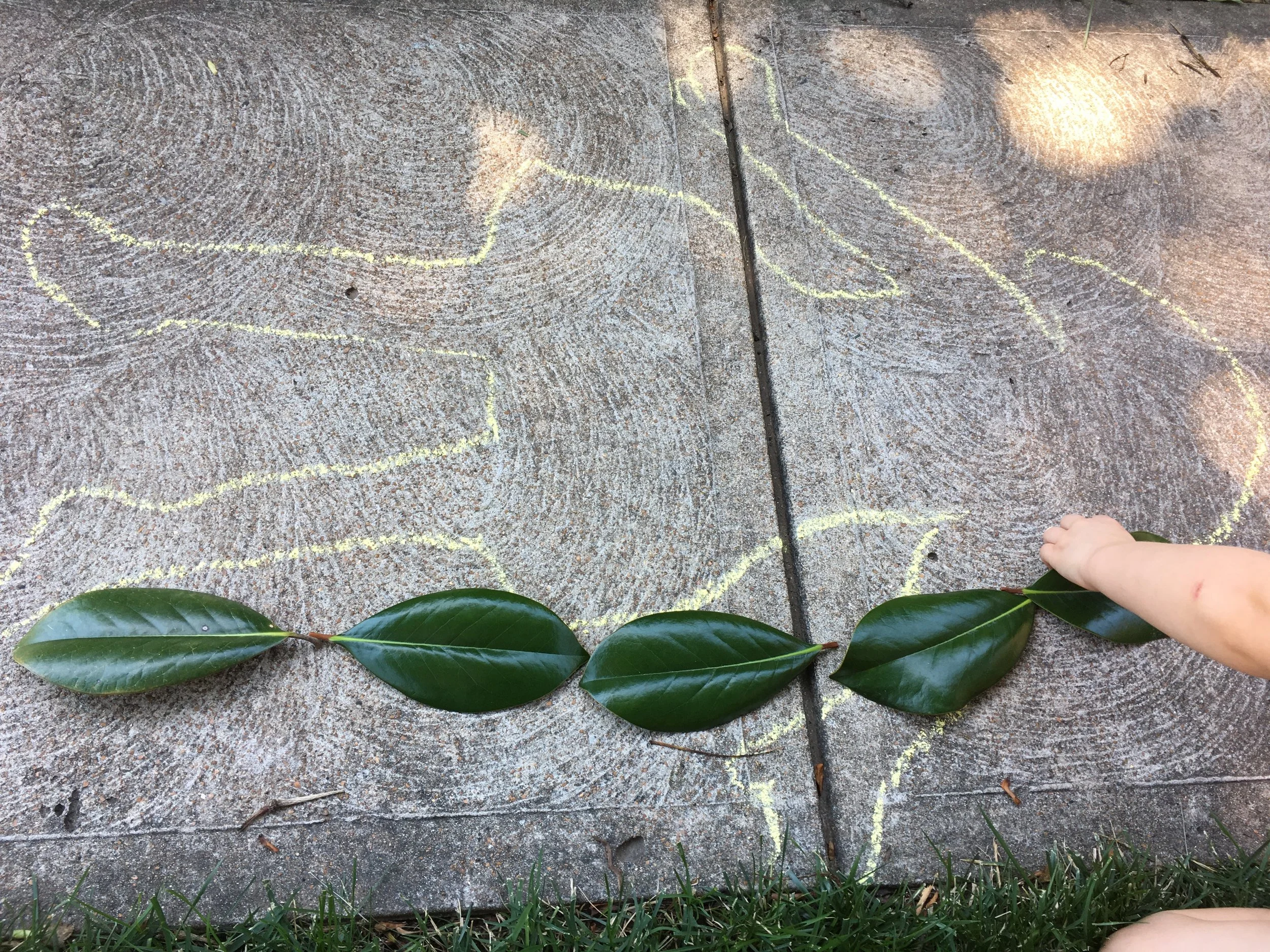Last summer we visited a Llama farm in rural Minnesota. My children had the opportunity to be up close and personal with these gentle creatures. As my two year old ran around the farm, she zeroed in on a baby Llama, hugging and petting it’s head and neck, exclaiming “you’re so tiny” and “you’re so little.” Eventhough, the baby Llama was bigger than my daughter (so not exactly tiny), by comparison to the mama, this one was small. Seeing the baby next to its mother gave her perspective to determine a difference in size.
But what if you can’t compare objects directly? What if you want a more precise comparison? Sometimes you need to use a unit to measure and then compare. Our invitation today is to practice measuring using nonstandard units determined by an item you find outside. (ex. It is two leaves long, It is five pinecones wide)
To compare objects, children begin by using nonstandard units (“My table is more than four hands long”) and then move to using standard units (“The table is almost three feet long”). Comparing fairly is an important concept for young children. - Juanita Copley, 2010
PLAYFUL INVITATION
1. Prepare: Gather chalk and natural materials that are consistent in size. For example, leaves from one tree, pinecones, sticks, etc.
Observe the child throughout the interaction. Use the Invitation to Play Documentation Tool to collect data.
2. Invite: Today I thought we could trace our bodies so we can see how big we are. (After tracing one or more bodies) I wonder whose body is the tallest/longest?
3. Play: Have each child lay on the ground and draw a chalk outline of his/her body. After the bodies are drawn provide a giant basket of one type of object. Be sure they are all similar size.
Model: Look how I lay these side by side from the top of your body to the bottom. Now let’s count how many we used…. Count together and write the number.
Look at the next body outline and do the same thing. Compare. Which was the longest?
Explain: We can measure using all kinds of different things. Next time let’s measure using sticks.
4. Reflect and Assess: What did you observe about the child’s knowledge of measurement.
Ready: This playful invitation would be best suited for older preschool or kindergarten children who can count with understanding, use the language of comparison and measurement to talk about size (same, different, bigger, smaller, long, tall), and have experience comparing objects.
Extend: Begin to introduce measuring tapes or rulers into the writing center and dramatic play. Continue to focus on nonstandard units for measuring until the children seems ready to advance.
Also, try filling the outline of the body with one material, and talk about area. How many leaves did you need to fill the entire body. Count, compare.
RESOURCES
Copley, J.V. (2010). The young child and mathematics (2nd. ed.). Washington, D.C: National Association for the Education of Young Children and National Council of Teachers of Mathematics.









